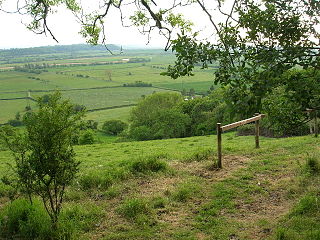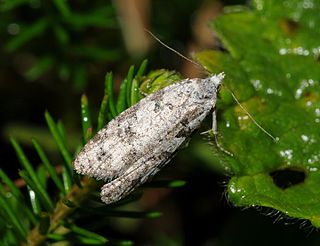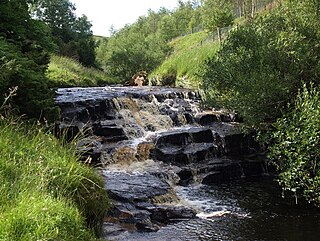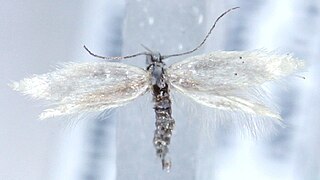NVC community CG7 is one of the calcicolous grassland communities in the British National Vegetation Classification system. It is one of three short-sward communities associated with heavy grazing, within the lowland calcicolous grassland group, and is regarded as the eastern counterpart of "typical" chalk grassland.

Festuca ovina, sheep's fescue or sheep fescue, is a species of grass. It is sometimes confused with hard fescue.
This article gives an overview of the calcicolous grassland communities in the British National Vegetation Classification system.
NVC community U6 is one of the calcifugous grassland communities in the British National Vegetation Classification system.
NVC community H1 is one of the heath communities in the British National Vegetation Classification system. It is one of five communities categorised as lowland dry heaths.

Bowerchalke Downs, is a 134 hectares biological Site of Special Scientific Interest in southern Wiltshire, England, notified in 1971.

Aller Hill is an 18.4 hectare biological Site of Special Scientific Interest near Aller in Somerset, notified in 1988.
NVC community SD12 is one of the 16 sand-dune communities in the British National Vegetation Classification system.
Leptospora is a genus of fungi in the class Dothideomycetes. It was placed in the Phaeosphaeriaceae family.
Echinosphaeria is a genus of fungi in the family Helminthosphaeriaceae.

The Lasiosphaeriaceae are a family of fungi in the Ascomycota, class Sordariomycetes.

Lasiosphaeria is a genus of fungi in the family Lasiosphaeriaceae.

Haliotis ovina, common name the sheep's ear abalone, is a species of sea snail, a marine gastropod mollusk in the family Haliotidae, the abalones.

Eana penziana, or Pentz's tortrix, is a moth of the family Tortricidae. It is found in most of Europe, east to the eastern part of the Palearctic realm. It is also found in the Near East.

Hunder Beck Juniper is a Site of Special Scientific Interest in the Teesdale district of south-west County Durham, England. It lies between the Balderhead and Blackton Reservoirs and adjoins the Cotherstone Moor SSSI to the south.
British NVC community OV37 is one of the open habitat communities in the British National Vegetation Classification system. It is one of six communities of crevice, scree and spoil vegetation.

Elachista pollinariella is a moth of the family Elachistidae. It is found from Finland and the Baltic region to the Iberian Peninsula, Italy and Romania and from France to Poland.
Chabertia ovina, the large-mouthed bowel worm, is a species of parasitic roundworms that infects sheep, goats and other wild ruminants. Infection of pigs are very infrequent. It is not known to be contagious to humans.
Cercophora areolata is a member of the Ascomycota division, and is grouped into the Lasiosphaeriaceae family based on morphology. C. areolata is a coprophilous fungus that has been most recently isolated from porcupine dung. Defining features of C. areolata include: 1) ovoid-conical, glabrous ascomata, 2) black, carbonaceous, areolate peridium and 3) clavate-shaped, single-walled asci. From studies on C. areolata, this fungus produces multiple antifungal compounds, which inhibit other competitor fungi.

Neohygrocybe ovina is a species of agaric in the family Hygrophoraceae. It has been given the recommended English name of blushing waxcap, since the lamellae (gills) and flesh turn pinkish red when bruised. The species has a European distribution, occurring mainly in agriculturally unimproved grassland. Threats to its habitat have resulted in the species being assessed as globally "vulnerable" on the IUCN Red List of Threatened Species.









